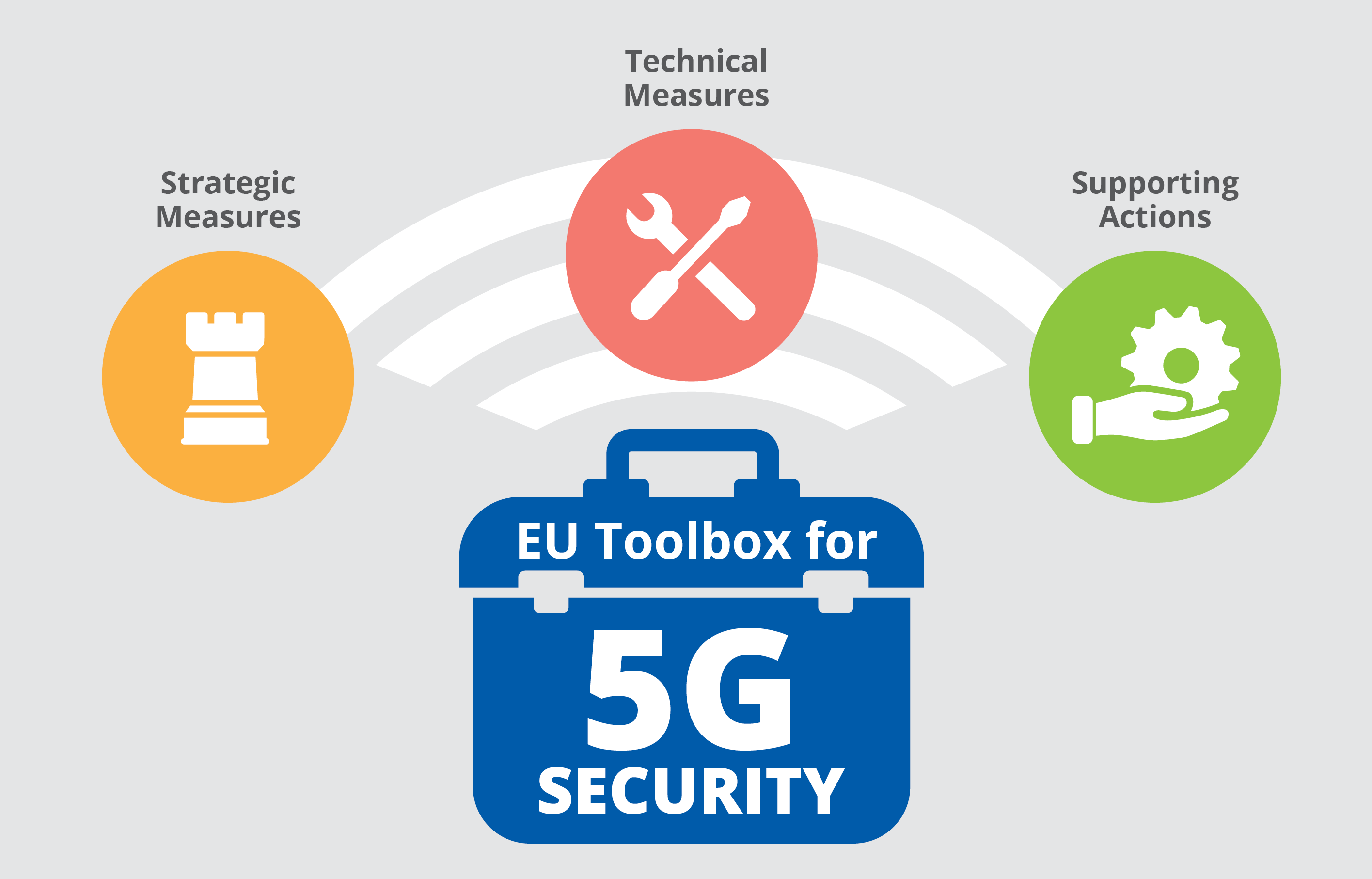Everything You Need to Know About 5G Security

5G is the most recent mobile data transmission protocol. It will boost speed, but it will also facilitate advanced data transfer that was not previously feasible.
It implies that corporations cannot simply view 5G to increase bandwidth solely. They will also require radical 5G security infrastructure to reap its benefits. Hence, a cohesive approach is needed to reduce 5G-enabled security risks.
This article will cover three-fold aspects:
- Communication transformation through 5G,
- the 5G security aspects, and
- how to protect against emerging 5G security challenges.
Keep reading.
What is 5G?
The first four generations introduced a new degree of connectivity. However, 3G and 4G focused on cellular data primarily. Similarly, this trend will continue with 5G, which aims to extend mobile broadband connectivity.
Interestingly, 5G will coexist with 4G before finally replacing it. In simplest terms, the cornerstone for 5G is fourth-generation (4G) Long-Term Evolution (LTE) wireless technology.
To begin with, fifth-generation wireless (5G) is the recent version of cell phone technology. 5G technology aims to enhance wireless network responsiveness and speed. The data is carried through wireless broadband connections using multigigabit speeds. Thus, the 5G anticipates offering as high as 20 gigabits per second (Gbps).
Moreover, these speeds are faster than landline network rates. They have a latency of 1 millisecond (ms) or less, thus making them ideal for real-time applications. However, with higher accessible bandwidth and enhanced antenna technology, 5G will significantly increase the volume of data delivered across wireless systems.
How does 5G works?
Wireless networks consist of cell sites. These cell sites are divided into sectors and radiofrequency used for data transmission. Contrary to the 4G technology, 5G wireless signals will broadcast through a series of smaller cell stations. Hence, the station positions are close in proximity, such as on roofs of the building or light poles.
As mentioned before, 5G relies on generating high speeds. It is due to the millimeter-wave (MM wave) spectrum. The spectrum band is between 30 – 300 gigahertz (GHz), which will deliver promised speed.
Noticeably, the speed can only travel short distances. Moreover, it is susceptible to weather and physical obstacles such as buildings or trees. Therefore, the use of multiple small cells is required.
How will 5G transform communications?
Connections between devices will be quicker and more scalable. Furthermore, it will have lower latency with the assistance of 5G, though not at the same time.
Here, we will look into three frequency bands employed by 5G:
- Low-bandwidth wireless communication is slow but broad, making it appropriate for rural locations.
- Mid-bandwidth When compared to 4G, mid-bandwidth offers faster connectivity rates at close range. It is technically known as eMBB or enhanced mobile broadband. The mid-band width is suitable for the majority of electronics used by professionals. Furthermore, a mid-band width network enables mMTC or massive machine-type communications. It means that numerous Internet of Things (IoT) devices can use 5G without overloading the infrastructure.
- High-bandwidth High-bandwidth connectivity is likely the most interesting new feature introduced by 5G. It paves the way for URLLC communications, also known as ultra-reliable, low-latency communications. Medical practitioners can practice remote procedures with 5G’s low latency. Additionally, it will allow rapid communication between autonomous vehicles, thus allowing them to be more operationally realistic.
What are the pros and cons of 5G?
Pros
- Increased Speeds – 5G networks are substantially faster than previous generations, with up to 20 Gbps potential speeds. It makes them 100 x faster than 4G and 4G LTE networks.
- Very Low Latency – 5G networks will have far less latency than 4G LTE networks. Latency is the time that passes between an action and a response—for example, cumulative time taken when clicking a link and browser obtaining results from the link.
- Enhanced capacity – 5G will have up to 1000x more power than 4G while operating on a broader frequency band. It will handle many high-demand apps simultaneously. Furthermore, it will connect thousands of internet-enabled devices. It can range from phones to sensors and IoT devices (Internet of Things).
Cons
- Limited Global Coverage – One of the most significant disadvantages of 5G is that it provides limited/uneven coverage and is only accessible in certain areas.
- Reduced Broadcast Distance – The network speed is due to a mix of frequency and new technology in the masts, not just the frequency of 5G. 5G, on the other hand, will not go as far away from the towers as 4G, and obstacles like towering buildings and trees will block its high-frequency signals. As a result, additional 5G towers must be erected for even coverage to provide the projected speed and service, both costly and time-consuming.
- 5G Security issues (to be discussed below)
Top 3 5G Security Challenges:
There are a few significant security risks that are unavoidable due to the 5G advancements.
- It is profitable for hackers to undertake data breaches with 5G. It is because 5G networks relay a substantially more considerable amount of data per unit time. 5G has enabled low-latency communications, thus making connection stability a non-negotiable feature. Given this advantage, 5G has attracted hackers more than ever.
- Companies can automate essential procedures as more devices communicate with one another. Regrettably, automation exacerbates exposure to pre-existing organizational weaknesses. Suppose an organization has overlooked “blind spots.” In that case, automation will further eliminate the possibility of uncovering a critical issue.
- In addition, most businesses will need to deploy significant counteractive measures against 5G security. It is a logistical difficulty given the amount of investment that will require a long time to set up.
As a side note, several networks transitioning to 5G should keep 4G vulnerabilities in mind. 5G coexists with 4G, therefore, carrying off its security issues to its more competent variant.
How to overcome these 5G security threats?
- The new 5G technology will have no fundamental changes required to secure organization data. It’s, therefore, crucial to manage users’ work-owned devices perpetually, irrespective of the networks. Accordingly, organizations should conduct a proof of concept before flooding with IoT devices.
- It would be best to examine your staff’s current security infrastructure. The evaluation will uncover potential “blind spots.” These could be closed so no one could use them to exfiltrate sensitive data.
- Train your staff about any 5G security issues.
- Keep your executive’s connected devices, such as smartphones, protected. Efani recognizes these telecommunication threats and takes proactive action to protect VIPs. The users have a choice to choose from 4G to 5G networks. Check out Efani to learn more about their services.
- It is ideal to stay informed with the 4Gsecurity issues. Since 5G coexists with 4G, any 4G security holes may continue with 5G. Managing 5G-enabled device software will be critical and time-consuming.
- Opt for a device management system for devices that will use 5G. As a tip, the management system should focus on IoT management in particular. While it may be inconvenient, organizations located in remote areas may experience poor 5G coverage. It is critical to match your expectations to the level of 5G access you will have.
Conclusion
It is essential to know that 5G is much more than a marginal improvement. 5G is profoundly disruptive for many sectors. Companies may only succeed in the 5G era if they keep 5G security challenges in mind. Not only this, but they should have proactive measures to mitigate them too.





